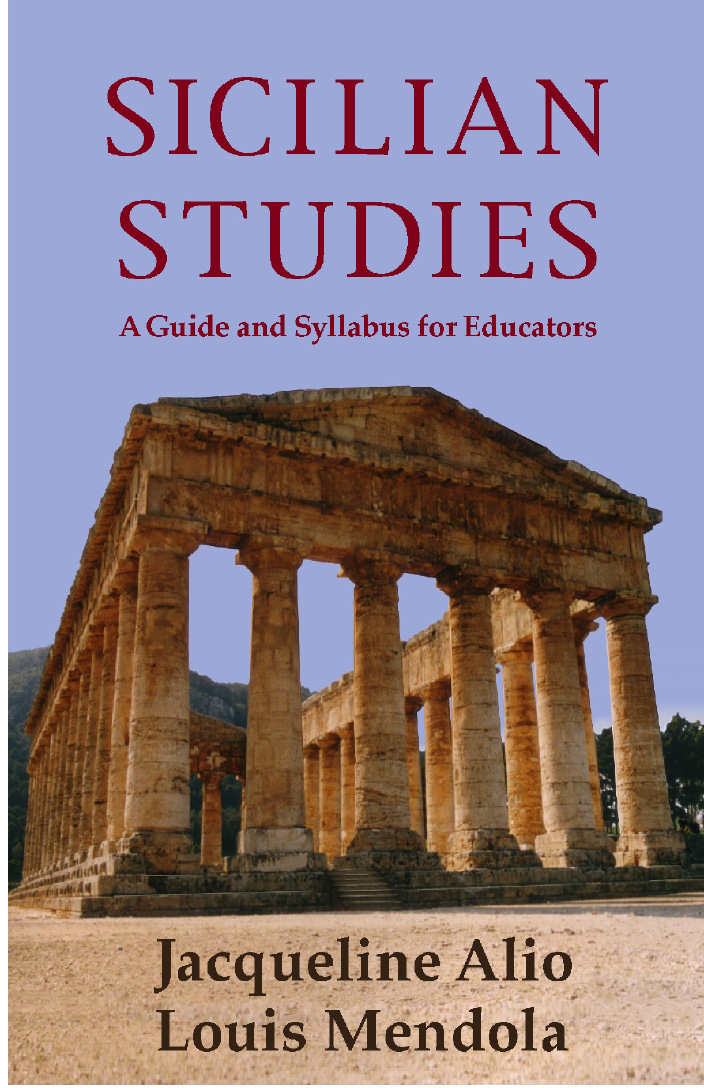 In the first book of its kind, two of
Sicily's leading historians and lecturers outline strategies and resources available in English for professors and other
instructors wishing to introduce students to the world's most conquered island.
In the first book of its kind, two of
Sicily's leading historians and lecturers outline strategies and resources available in English for professors and other
instructors wishing to introduce students to the world's most conquered island.
 In the first book of its kind, two of
Sicily's leading historians and lecturers outline strategies and resources available in English for professors and other
instructors wishing to introduce students to the world's most conquered island.
In the first book of its kind, two of
Sicily's leading historians and lecturers outline strategies and resources available in English for professors and other
instructors wishing to introduce students to the world's most conquered island.
Sicily boasts a cosmopolitan heritage, yielding lessons perfectly suited to our complex times. This guide is not only for educators. It's useful for anybody seeking sources of accurate information about Sicily, a place which over the centuries has been politically connected to Asia and Africa as well as Europe. The authors consider Sicilian Studies as a multifaceted field in itself, not merely a specialized niche within the broad field of Italian Studies.
Most of the text consists of succinct descriptions or reviews of books and (in a few cases) articles useful to those seeking to learn about Sicily.
The book includes a lengthy chapter setting forth the history of Sicily, along with numerous maps and a 3000 year timeline. This makes it very useful even for teachers who may be unfamiliar with Sicily yet interested in teaching about it.
In addition to a consideration of how to teach about Sicilian history, archeology, literature and even cuisine and the Sicilian language, this book offers candid, practical suggestions for those planning study tours or courses in Sicily. This guide is more than a blueprint. It presents a pragmatic concept of what this field can be.
This is based on experience. Over the years, the authors have advised professors on how to formulate such courses, and they have occasionally presented lectures to university students.
The point of view, as well as the advice, is impartial, unbiased, because the authors are not beholden to any specific academic publisher or institution. Never before have so many works about Sicily covering the island's lengthy history in English been described in a single volume. Chapters are dedicated to foundational principles, historiographical concepts and the history of Sicily, followed by the consideration of works on ancient, medieval and modern Sicily, special topics (women's studies, genealogy, the Mafia), the Sicilian language, the arts (art, film, literature, music), culinary topics and, finally, study tours.
At 250 pages, it is fairly concise, with no space wasted, yet highly informative.
This guide makes it possible to teach a course related to Sicily even if your institution lacks an Italian Studies department. Its publication was long overdue.
Home • Queens of Sicily • Margaret, Queen of Sicily • The Peoples of Sicily • Ferraris Chronicle • Sicilian Studies • Time Traveler's Guide • Women of Sicily • Food & Wine • Interview